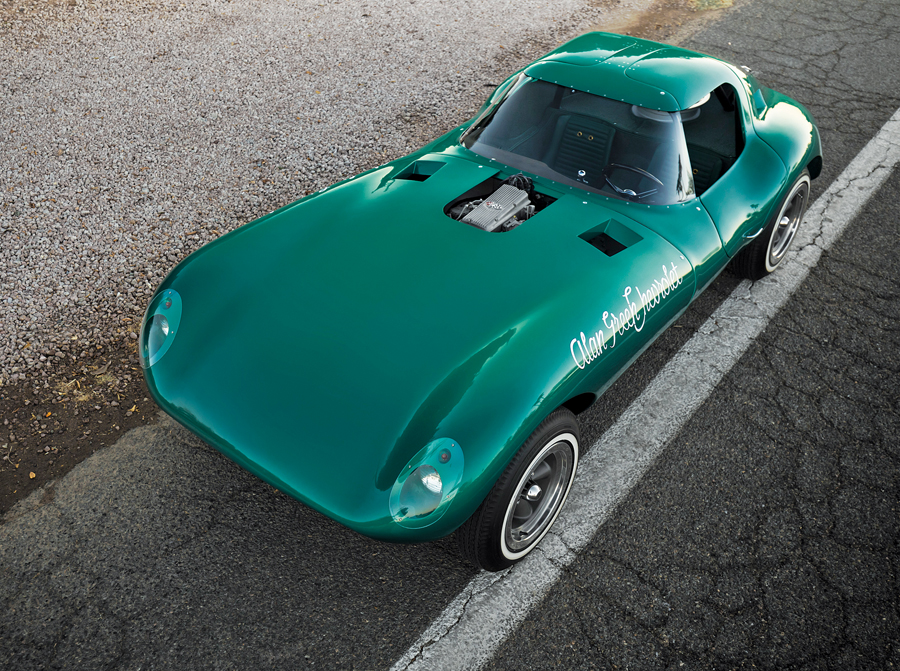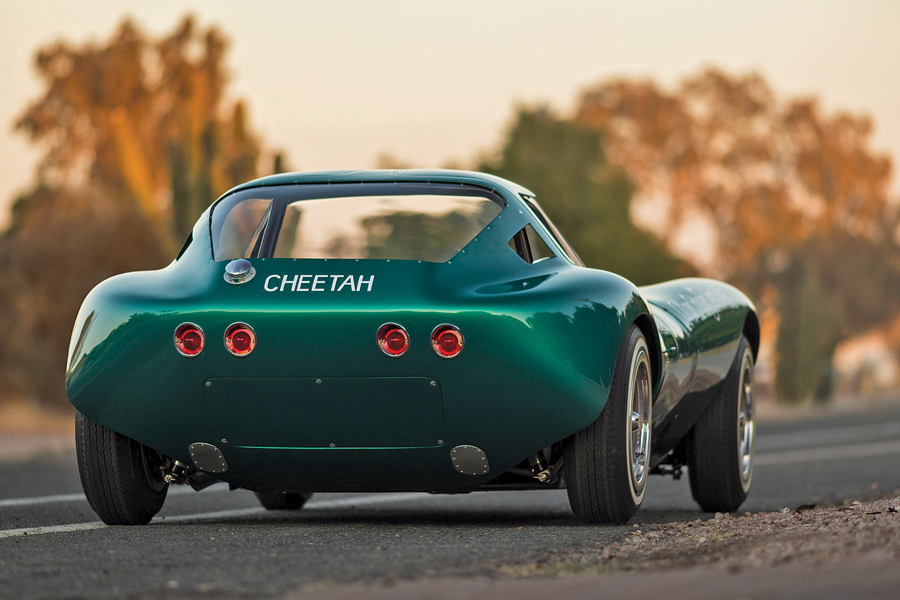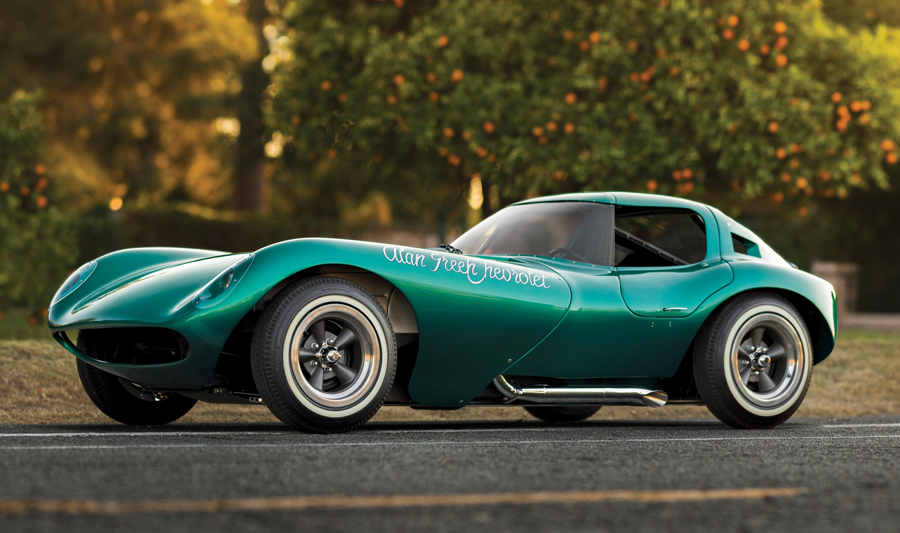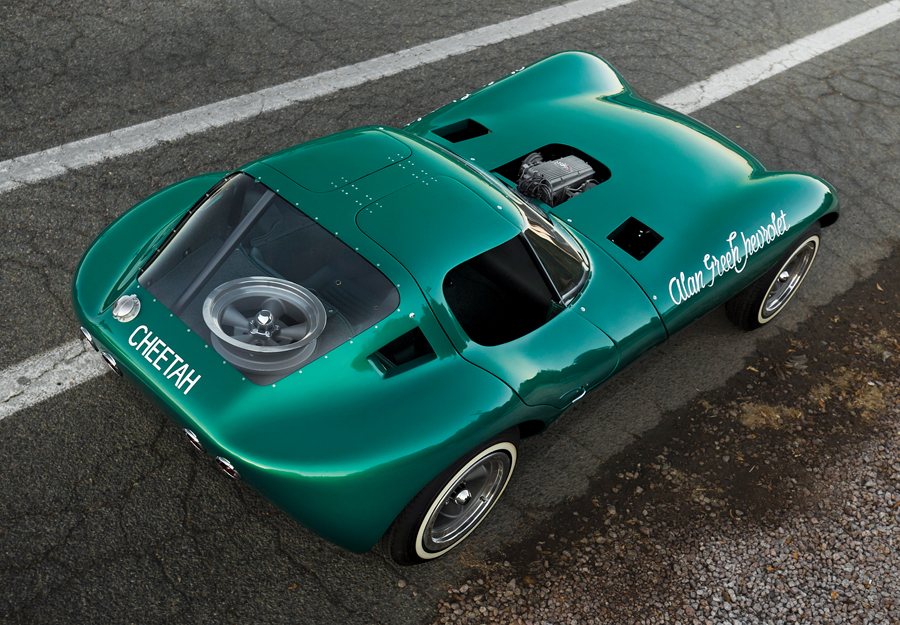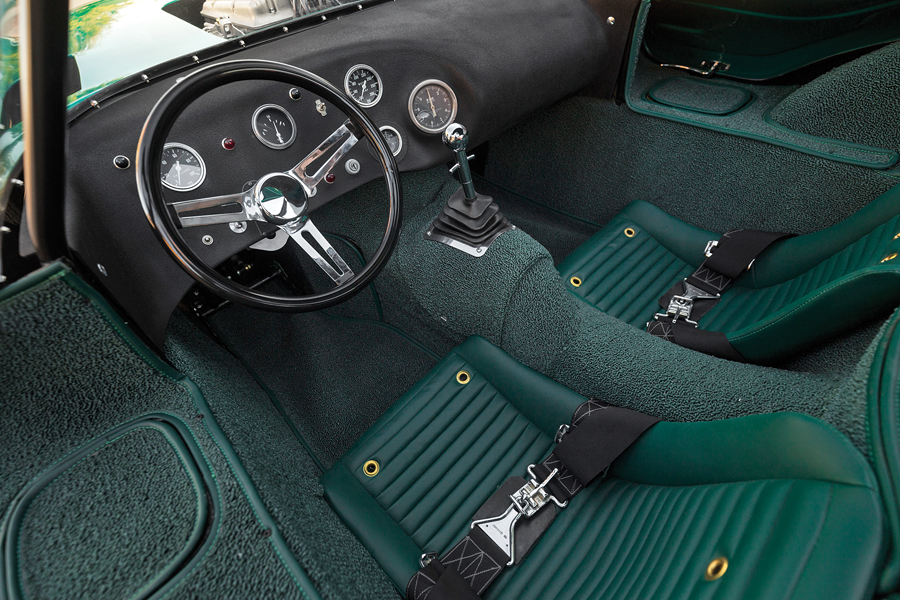- One of only 10 genuine Cheetahs in the United States
- Original Bill Thomas 377-ci Rochester fuel-injected engine
- BTM of Arizona-certified and restored to museum quality
- Known as “The Cobra Killer” on and off the race track
- Period photos and restoration information available
SCM Analysis
Detailing
| Vehicle: | 1964 Bill Thomas Cheetah |
| Years Produced: | 1964–65 |
| Number Produced: | 10 (completed cars) |
| Original List Price: | N/A |
| SCM Valuation: | $660,000 (this car) |
| Engine Number Location: | Right side above water pump |
| Club Info: | Cheetah Evolution |
| Website: | http://www.cheetahevolution.com |
| Alternatives: | 1962–65 Shelby Cobra, 1963 Lola Mk 6, 1963–65 Chevrolet Corvette competition |
| Investment Grade: | A |
This car, Lot 2032, sold for $660,000, including buyer’s premium, at Russo and Steele’s auction in Scottsdale, AZ, on January 20, 2018.
There was an old rule of thumb about installing the single nut that held an early Porsche 356 flywheel: “Tighten it until the threads strip, then back it off a quarter turn.”
During the early 1960s, at the intersection of hot rod, home-built racers and carefully engineered corporate supercars, there was a period of wild — almost outrageous — experimentation with how extreme a concept could be before it failed. The Cheetah was the poster child for this approach, both for its back-of-a-napkin, let’s try-it-and-see-if-it-works approach and, candidly, its eventual failure as a viable concept.
Don’t get me wrong; the Cheetah was a glorious undertaking, iconic in its effrontery, and damned handsome to boot — as long as you didn’t have to drive it.
Shooting at the Snake
It really all started with the Cobra. Carroll Shelby had taken a 2-liter, mid-1950s British sports car chassis called an AC and installed a 4.3-liter (later 4.7-liter) Ford V8 engine and drivetrain to create a phenomenon.
Both the hot-rod and road-racing worlds were suddenly in love with this outrageous new combination of British beauty and handling coupled with American muscle.
Chevrolet, which had spent years developing the Corvette (and which had rebuffed Shelby’s proposal to use their engines because they didn’t want the competition), suddenly found their sporting dominance challenged. To be fair, the Corvette was a serious mass-market sports car, while the Cobra was niche market at best, but somebody in the Chevrolet world had to pick up the gauntlet, if only for the publicity.
Bill Thomas was a Southern California racing preparation guy who had made his reputation — and a successful business — working with Chevrolet. He started building racing Corvettes in 1956 and was proficient at drag cars as well as Pikes Peak hill climbers.
More to the point, Thomas had proven fabrication capabilities and an excellent — if very quiet — relationship with the General Motors performance guys.
GM was still trying to abide by a corporate “no racing” policy, so the agreement was that Chevrolet would provide the engine, drivetrain and suspension bits for Thomas to create a concept vehicle that would capture the attention and imagination of the automotive world.
It was not to be a Chevrolet any more than a Cobra was a Ford, but it needed to carry the banner. Thomas set to work with a clear understanding that his job was to create something spectacular, different and beautiful.
No driveshaft needed
By 1963, when this whole project got going, the mid-engined revolution was a reality in much of the racing world. Formula One and small sports racers almost exclusively had the engine behind the driver’s seat.
The basic advantage was something called the polar moment of inertia: Putting the mass as close as possible to the center of the car made rotating it while the car turns much easier, so handling improves markedly. The problem was that the approach requires combining the transmission and the differential unit into a single housing (called a transaxle), and nobody was building one yet that could handle V8 torque.
There was also the issue that Chevrolet had kindly supplied Thomas with a front-engined Corvette drivetrain, so he was pretty much obligated to stay with a front-engine/rear-drive concept.
The answer was simple if extreme: Move the engine so far back in the chassis that the transmission coupled directly with the differential housing. There was no driveshaft at all, only a U-joint coupling between them. This was possible, of course, because it used the new Corvette independent rear suspension, so the differential could be rigidly mounted in alignment with the transmission.
I am told that this was a design approach that worked far better in theory than in practice, particularly when the frame started to flex in racing use.
There were a number of other consequences of this being effectively a front-mid-engined design.
Shortening the distance between the engine and rear axles meant that the driver had to somehow still fit into that space, which meant sitting almost on top of the rear axle. This can be a disconcerting feeling if you are concerned about something maybe coming loose back there, and it also means getting used to the center of rotation in a turn being somewhere around your ankles, with your head following them.
Oh, yeah, there is one other issue. With your toes being at about the front of the engine, the exhaust headers have to go up, over and around the foot boxes, which does a wonderful job of turning them into toaster ovens. Combined with a complete lack of cockpit ventilation, this makes for what can delicately be described as a suboptimal driver environment, particularly on a warm day.
A centerfold beauty
The car is, however, drop-dead gorgeous in a Playboy centerfold kind of way, which is to say that it has all the characteristics to make a virile younger man’s palms sweat.
Although apparently sketched out on a cocktail napkin and finalized with plywood forms on the shop floor — rather than in some fancy design studio — the shape manages to be about as sexy as anything that came out of the early 1960s. That said, the Cheetah was not particularly aerodynamic. At speed, the lift generated tried to suck the gullwing doors off.
Although it was well built, the frame was anything but sophisticated. The design approach was to line up the mechanical bits on the shop floor, then figure out how to build a frame to hold it all together.
This would be fine for a show car (which was the original intent) or even for a gently used street rod, but they immediately started to road race the Cheetah. During a race, the lack of torsional rigidity combined with the short wheelbase and insane power-to-weight ratio made for an exciting driving experience.
A moment’s inattention and the car would swap ends in a heartbeat. Two of the cars crashed badly their first time out. Over time, the drivers learned what to expect, and the crews learned how to reinforce and stiffen the frame — so several Cheetahs had impressive racing careers.
Our subject car was never intended to be a racer. It is chassis 7, and it is the last of three cars that Alan Green, a Seattle Chevrolet dealer, bought. It was intended to be a promotions car and occasional street ride for Green’s wife. As it was a street ride, with some amateur drag racing thrown in, it managed to survive relatively unscathed, but not quite.
According to Larry Webb, who worked for Alan Green in the day and knows the car well, it was eventually sold to a man who took it drag racing in Mission, British Columbia, just north of Seattle.
The guy was running without the front bodywork for some reason when something went wrong and it flipped, ending up skidding down the track on its roof. It was then carted back to Seattle, where it sat in the back of a shop for over 30 years before being given to Bill Thomas’ old company for restoration.
Now it’s back.
A famous and rare breed of cat
The Cheetah was never a success. Ten cars were completed, and maybe another 10 to 12 frames were involved at some point or another before Thomas’ shop burned in September of 1965, ending the project.
The car’s shape, attitude and image caught people’s imagination, and it endured. It became one of the most popular slot-car models ever. In recent years, a number of reproduction Cheetahs with better frames and suspensions — but the same old shape — have been sold. An original Cheetah remains an icon of the glory years of American racing.
An original example of any icon is going to be highly collectible, pretty much by definition, and a non-racing example of a car that gained its notoriety through audacious competition will be even more attractive to a buyer looking to fill out a display collection of important American performance cars.
The Cheetah is the perfect counterpoint to a Cobra. This car is almost hen’s-tooth rare. I think that this was the most expensive Cheetah ever sold, but it probably deserves to be. I’d say fairly bought. ♦
(Introductory description courtesy of Russo and Steele.)
